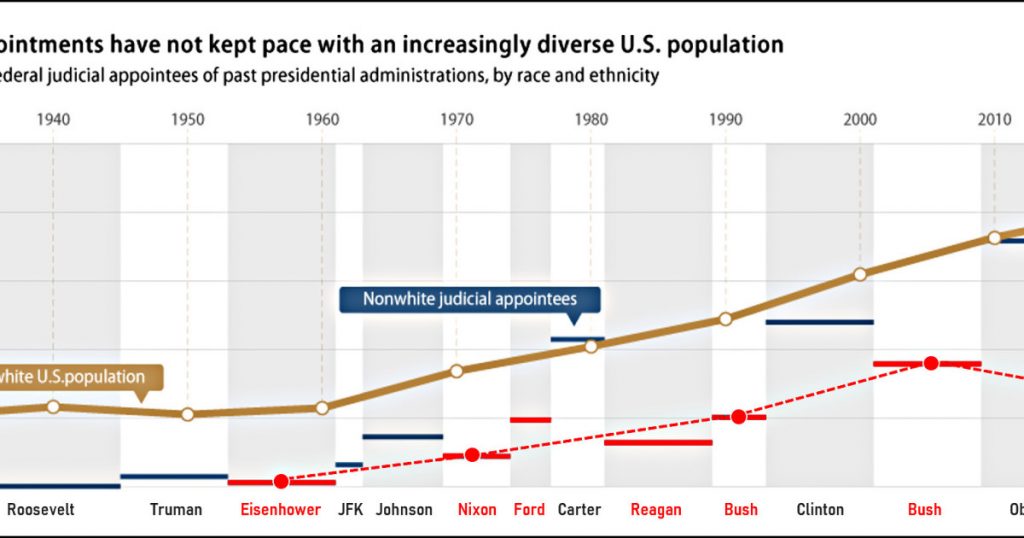White Judges and Donald Trump
The Center for American Progress released a report today about the diversity of the federal judiciary, and you will be unsurprised to learn that it continues to be more male and more white than the general population. You can read the whole report here, but I want to highlight just a single chart:
As you can see, Republican presidents tend to appoint fewer nonwhite judges than Democrats, which is perfectly understandable. Republicans want to appoint conservative judges, but nonwhite judges tend to be more liberal than average. There just aren’t a whole lot of conservative nonwhite judges for Republicans to choose from.
However, as you can also see, Republican presidents have nonetheless produced steadily higher numbers of nonwhite judges through the years—until you get to Donald Trump. Then, for the first time ever, the share of nonwhite judges is lower than the previous Republican president.
It’s tempting to roll your eyes at this and mutter “Duh!” under your breath. But not so fast. You see, one thing that pretty much everyone agrees about is that Trump himself plays no part in his administration’s judicial appointments. Not even a tiny one. The whole operation, until very recently, was run by Don McGahn using lists of candidates mostly prepared by the Federalist Society. And there’s no special reason to think that either McGahn or the Federalist Society share Trump’s racial views.
So why the sudden drop in nonwhite judicial appointees? It almost certainly has nothing to do with Trump, who probably couldn’t even name any of his nominees, let alone express opinions about them. Why have McGahn and the Federalist Society been so halfhearted about finding nonwhite judges, even though they’re plainly available and it’s plainly good PR to nominate them?
I don’t know. However, one possibility is that the outlier isn’t McGahn, but George Bush. For a Republican, he was, perhaps, unusually committed to finding nonwhite judges. By this hypothesis, McGahn is right on the trendline of Republican appointments over time, and there’s nothing to explain.
Any other ideas?





